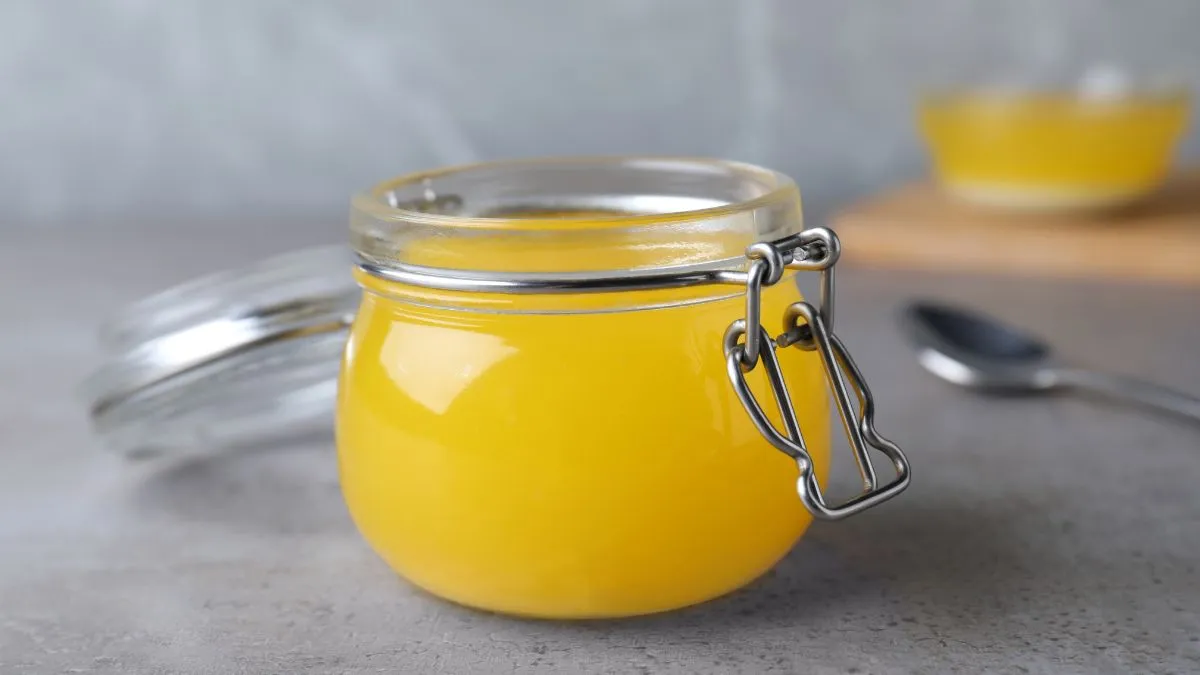- By Akansha Pandey
- Wed, 22 Oct 2025 11:23 AM (IST)
- Source:Jagran News Network
With the Chhath Mahaparv approaching, a significant increase in the demand for desi ghee is being observed. As devotees strive to ensure the sanctity and purity of their prasad (religious offering), concerns over the abundance of fake and adulterated ghee in the market have grown.
In Patna and its surrounding areas, desi ghee is reportedly being sold at prices ranging from Rs 700 to Rs 2,800 per kilogram. While the public often purchases ghee based on trust in a brand or shopkeeper, experts warn that much of this product may not be entirely pure.
Adulteration Methods And Official Response
Food Safety Officer Ajay Kumar noted that substandard substances are being used to create fake ghee. He stated that the process of collecting ghee samples from various city markets is being initiated to ensure consumers receive pure products.
According to reports, some traders allegedly prepare fake ghee by mixing the following:
- Vegetable oil
- Butter
- Dalda
- Hydrogenated oils
- Mashed potatoes and sweet potatoes (as a base)
- Artificial fragrance
This adulterated ghee is made to look like the real product and is often sold cheaper, which deceives customers.
Impact Of Elections On Inspections
The Food Safety Department's inspection process has been admittedly slow this year. This is attributed to the ongoing assembly elections and a related shortage of manpower. Officers from other districts have not been deputed to assist, which has limited the department's ability to take widespread action.
How To Test Ghee Purity At Home
Several methods can be used at home to check for adulteration:
Palm Test: Take a small amount of ghee in your palm and rub it until you feel a slight burning sensation. Smell it. If the fragrance remains consistent, the ghee may be pure. If the aroma diminishes, it is likely adulterated.
Lukewarm Water Test: Add a few drops of ghee to a glass of lukewarm water. If the drops float without dispersing, the ghee is pure. If the ghee begins to spread or sinks, it may be adulterated.
Betadine Or Iodine Test: Add one drop of Betadine or iodine to a teaspoon of ghee. If the solution turns blue or black, the ghee is adulterated with starch (like potatoes or sweet potatoes).
Salt And Acid Test: In a container, take half a teaspoon of salt and add 2-3 drops of hydrochloric acid (found in some bathroom cleaners). Mix in two teaspoons of ghee. If the colour of the mixture turns pink or red within 15–20 minutes, the ghee is adulterated.
Heating Test: Heat 4-5 teaspoons of ghee in a pan, as if clarifying butter. After it has cooked and cooled down, strain it. If its colour remains yellow, the consistency is normal, and the original aroma is retained, the ghee is pure.
Advice For Devotees
The Food Safety Department has advised Chhath devotees to be cautious when purchasing ingredients for prasad, especially desi ghee. Consumers are urged to:
- Purchase ingredients only from trusted brands or shops.
- If there is any doubt about the product's quality, test the purity of the ghee at home using the methods mentioned above.
Also Read: Delhi Air Pollution: NDMC Deploys New Sweepers, Anti-Smog Guns By December

